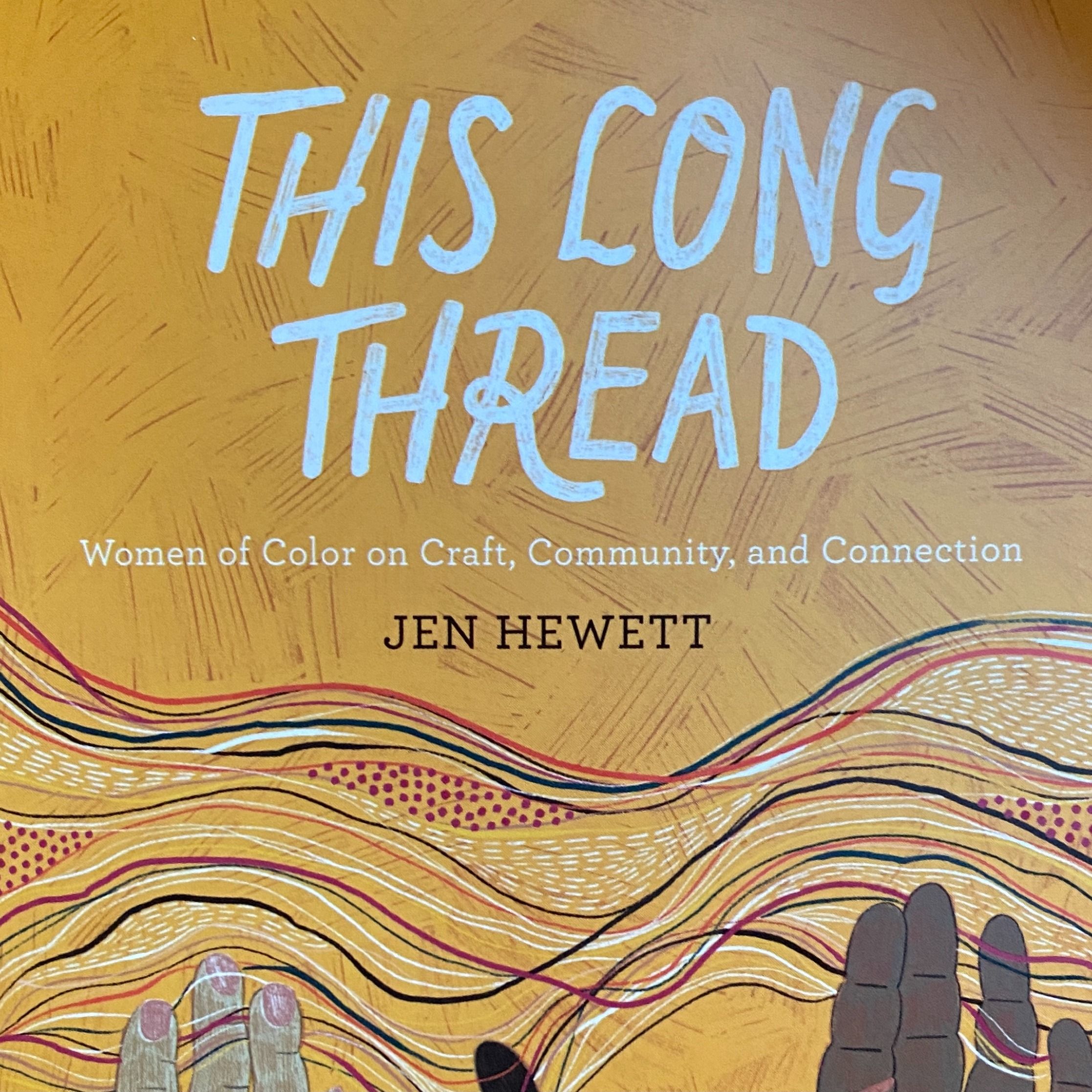Sponsored by Accuquilt!
Sign up for the Black Women Stitch quarterly newsletter!
Check out our merch here
Leave a BACKSTITCH message and tell us about your favorite episode.
Join the Black Women Stitch Patreon
Lisa Woolfork
Lisa Woolfork is an associate professor of English specializing in African American literature and culture. Her teaching and research explore Black women writers, Black identity, trauma theory, and American slavery. She is the founder of Black Women Stitch, the sewing group where Black lives matter. She is also the host/producer of Stitch Please, a weekly audio podcast that centers on Black women, girls, and femmes in sewing. In the summer of 2017, she actively resisted the white supremacist marches in her community, Charlottesville, Virginia. The city became a symbol of lethal resurging white supremacist violence. She remains active in a variety of university and community initiatives, including the Community Engaged Scholars program. She believes in the power of creative liberation.
Bisa Butler
Bisa Butler is an award winning African American textile artist known for her vibrantly stunning larger than life sized quilted portraits that captivate viewers around the world. Formally trained, Butler graduated Cum Laude from Howard University with a Bachelor’s in Fine Art degree and it was during this time that she began to experiment with fabric as a medium and became interested in collage techniques. She then went on to earn a Master’s in Art from Montclair State University in 2005. While in the process of obtaining her Master’s degree, Butler took a Fiber Arts class where she had an artistic epiphany and she finally realized how to express her art. “As a child, I was always watching my mother and grandmother sew, and they taught me. After that class, I made a portrait quilt for my grandmother on her deathbed, and I have been making art quilts ever since.”
After working as a high school art teacher for thirteen years, Butler was awarded a Gordon Parks Foundation Fellowship in 2002 and exhibited in Switzerland during Art Basel with the Jeffrey Deitch Gallery. Many institutions and museums have acquired Butler’s work including the Art Institute of Chicago for a solo exhibition, The Smithsonian National Museum of African American History and Culture, and The Renwick Gallery of the Smithsonian American Art Museum.
Insights from this episode:
- Why it’s important to uplift and encourage each other, starting with the children in our lives
- How Bisa uses her art to affirm the dignity of historical figures
- The process of researching historical figures and time periods to accurately portray them through art
- How different colors play into the meaning expressed in her art
- How Bisa infuses her quilts with the music she’s listening to as she creates
- What happens when you stop starting with ‘white’ as a default
- Insights into the difference between studying art education (teaching people how to make art) vs. learning how to make art yourself
Quotes from the show:
- “I’m always seeking for truth and to find those essential truth elements about Black people.” – Bisa Butler, Stitch Please, Episode #200
- “I have had people ask me, people who don’t necessarily look like us so they don’t have a full understanding, ‘I notice that you make all of your subjects look regal. Why, or what’s the process of that?’ I would say I’m just looking at them and this is the way they appear to me. I’m not trying to make them look regal; if anything maybe it’s just that you’re looking at them more carefully. The dignity or that inner regality, I can’t give it to them; they have it already.” – Bisa Butler, Stitch Please, Episode #200
- “My interest in colorism is why the features look very African American. I don’t want to dilute that in any way. I’m loving our full lips, broad noses, or whatever the case may be.” – Bisa Butler, Stitch Please, Episode #200
- “I love that word ‘talisman’ because it acknowledges that spiritual resonance and also having a mantra. We’ve always been very spiritual people and we’ve always been people who have to think hopefully and we have to think about the world beyond us or even after us. A lot of times we have to pray for our living relatives who we may not be able to protect in the way that we want to.” – Bisa Butler, Stitch Please, Episode #200
- “Music is such a strong form of communication; it’s such a strong form of art because you don’t need words, you just need to hear the sound to understand somebody’s emotional output. The composer, musician, they can make you feel sad, they can make you feel happy, they can make your heartbeat go faster, they can make you go to sleep. That’s a control of power that can be passed down through the ages. The music, as long as it’s in a form that you can hear, you can hear how somebody felt hundreds of years before you.” – Bisa Butler, Stitch Please, Episode #200
- “The music to me is more than an aid; it’s the explanation.” – Bisa Butler, Stitch Please, Episode #200
- “For Black Women Stitch and the Stitch Please podcast we center Black women, girls, and femmes in sewing to make a deliberate choice to center Blackness. Also one of the things I’m studying a lot in my own work is the question of what happens when you stop starting with white… Stop acting like color is something that is new when white supremacy operates in this country deliberately through our laws and customs.” – Lisa Woolfork, Stitch Please, Episode #200
- “We are the sum of all the people who came before us.” – Lisa Woolfork, Stitch Please, Episode #200
- “Be kind to yourself. Be patient with yourself. Treat yourself like you treat other people; it will help you get your stitch together. Enjoy your life. Look at beautiful things. Take classes and learn, and be patient if things don't look or seem the way you want because we are all growing in this life together and you will get there.” – Bisa Butler, Stitch Please, Episode #200
Resources Mentioned:
- Francis and Violette, 2001
- The Holsinger Collection, Bill Hurley’s portrait, and Bisa’s interpretation: A Man’s Worth, 2019
- This Here Flesh: Spirituality, Liberation, and the Stories That Make Us by Cole Arthur Riley (“You don’t give dignity, you affirm it.”)
- Bisa Butler: Portraits at the Art Institute of Chicago and accompanying playlist
- I Owe You Nothing by Seinabo Sey (song)
Stay Connected:
YouTube: Black Women Stitch
Instagram: Black Women Stitch
Facebook: Stitch Please Podcast
Lisa Woolfork
Instagram: Lisa Woolfork
Twitter: Lisa Woolfork
Bisa Butler
Website: Bisa Butler
Instagram: Bisa Butler
Twitter: Bisa Butler
LinkedIn: Bisa Butler
LinkTree: Bisa Butler
Email: bisabutlerart@gmail.com
Subscribe to our podcast + download each episode on Apple Podcasts and Spotify.
This episode was produced and managed by Podcast Laundry.
Sign up for the Black Women Stitch quarterly newsletter
Check out our merch here
Leave a BACKSTITCH message and tell us about your favorite episode.
Join the Black Women Stitch Patreon
Check out our Amazon Store
Stay Connected:
YouTube: Black Women Stitch
Instagram: Black Women Stitch
Facebook: Stitch Please Podcast




